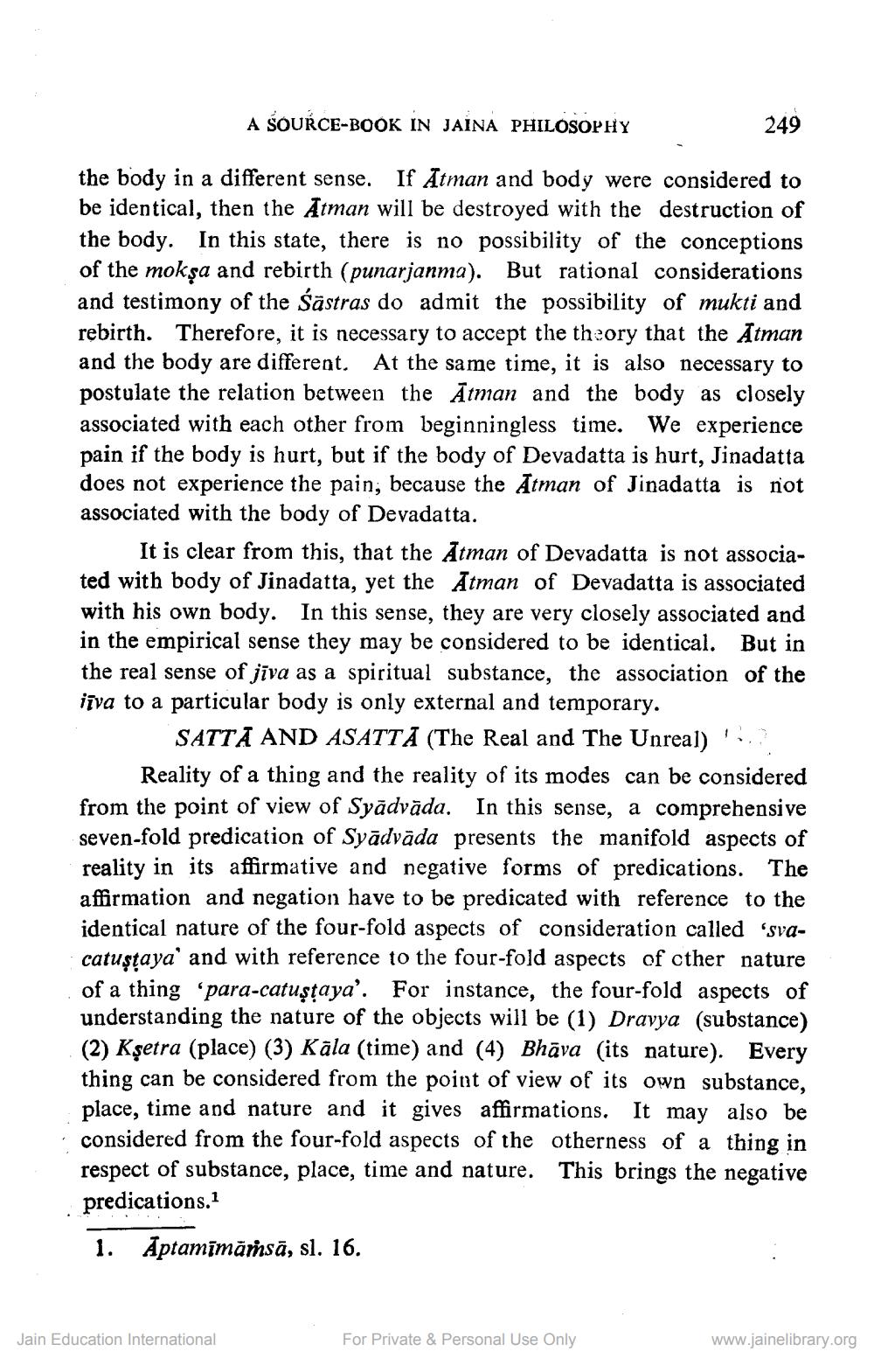________________
A SOURCE-BOOK IN JAINA PHILOSOPHY
the body in a different sense. If Atman and body were considered to be identical, then the Atman will be destroyed with the destruction of the body. In this state, there is no possibility of the conceptions of the moksa and rebirth (punarjanma). But rational considerations and testimony of the Sastras do admit the possibility of mukti and rebirth. Therefore, it is necessary to accept the theory that the Atman and the body are different. At the same time, it is also necessary to postulate the relation between the Atman and the body as closely associated with each other from beginningless time. We experience pain if the body is hurt, but if the body of Devadatta is hurt, Jinadatta does not experience the pain, because the Atman of Jinadatta is not associated with the body of Devadatta.
It is clear from this, that the Atman of Devadatta is not associated with body of Jinadatta, yet the Atman of Devadatta is associated with his own body. In this sense, they are very closely associated and in the empirical sense they may be considered to be identical. But in the real sense of jīva as a spiritual substance, the association of the iīva to a particular body is only external and temporary.
SATTA AND ASATTA (The Real and The Unreal)
249
Reality of a thing and the reality of its modes can be considered from the point of view of Syadvada. In this sense, a comprehensive seven-fold predication of Syadvāda presents the manifold aspects of reality in its affirmative and negative forms of predications. The affirmation and negation have to be predicated with reference to the identical nature of the four-fold aspects of consideration called 'svacatuşṭaya' and with reference to the four-fold aspects of cther nature of a thing 'para-catuṣṭaya'. For instance, the four-fold aspects of understanding the nature of the objects will be (1) Dravya (substance) (2) Kşetra (place) (3) Kāla (time) and (4) Bhāva (its nature). Every thing can be considered from the point of view of its own substance, place, time and nature and it gives affirmations. It may also be considered from the four-fold aspects of the otherness of a thing in respect of substance, place, time and nature. This brings the negative predications.1
1. Āptamīmāṁsā, sl. 16.
Jain Education International
For Private & Personal Use Only
www.jainelibrary.org




